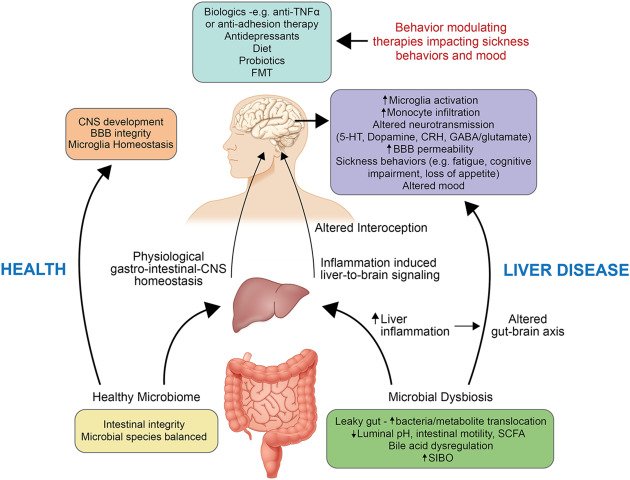liver-brain axis
liver-brain axis:The liver-brain axis refers to the bidirectional communication between the liver and the brain, involving various signaling molecules and pathways. It is a relatively new concept that highlights the interplay between these two organs and their impact on overall health and disease. While the primary function of the liver is to detoxify and metabolize substances in the body, emerging research suggests that it also plays a significant role in influencing brain function and neurological disorders, including dementia.
The liver-brain axis operates through several mechanisms. One of the key players in this communication is the gut microbiota. The gut is populated by trillions of microorganisms that interact with the food we consume. The liver receives signals from the gut microbiota through the portal vein, a blood vessel that carries nutrients and microbial products directly from the intestine to the liver. The liver, in turn, metabolizes these products and produces various metabolites that can influence brain function.
One important class of metabolites produced by the liver is bile acids. Bile acids are synthesized in the liver and released into the intestine to aid in the digestion and absorption of dietary fats. However, recent studies have shown that bile acids can also act as signaling molecules that interact with specific receptors in the brain, known as the farnesoid X receptor (FXR) and the G protein-coupled bile acid receptor 1 (TGR5). Activation of these receptors by bile acids can modulate neuronal function, neuroinflammation, and neurogenesis, all of which are relevant to dementia.
Furthermore, the liver is involved in the metabolism of lipids, including cholesterol. Dysregulation of lipid metabolism is often observed in individuals with metabolic syndrome, a cluster of conditions that includes obesity, insulin resistance, and dyslipidemia. Metabolic syndrome has been linked to an increased risk of cognitive decline and dementia. The liver’s role in lipid metabolism suggests that it may contribute to dementia pathology through the production of lipid-related molecules and their impact on brain function.
In addition to metabolites, the liver also produces and releases various cytokines and inflammatory mediators that can affect the brain. Chronic inflammation is believed to play a crucial role in the development and progression of neurodegenerative disorders, including Alzheimer’s disease, the most common form of dementia. The liver’s involvement in the regulation of inflammation makes it a potential contributor to the neuroinflammatory processes observed in dementia.
Moreover, the liver is responsible for the clearance of toxins and waste products from the body. Impairment of liver function can lead to the accumulation of harmful substances in the bloodstream, which may have adverse effects on the brain. For example, elevated levels of ammonia, a byproduct of protein metabolism that is normally detoxified by the liver, can cause hepatic encephalopathy—a condition characterized by cognitive impairment, confusion, and even coma. While hepatic encephalopathy is distinct from dementia, it demonstrates the potential impact of liver dysfunction on brain function.
While our understanding of the liver-brain axis and its influence on dementia is still evolving, emerging evidence suggests that there is indeed a connection between liver function and cognitive health. However, it is important to note that dementia is a complex disorder with multifactorial causes, and the liver-brain axis is just one piece of the puzzle. Other factors such as genetics, lifestyle, vascular health, and neuroinflammation also contribute to the development and progression of dementia.
In summary, the liver-brain axis represents the bidirectional communication between the liver and the brain, involving various signaling molecules and pathways. Although the precise mechanisms are still being elucidated, there is growing evidence to suggest that the liver can influence brain function and play a role in the development of dementia. Understanding the liver-brain axis may open up new avenues for therapeutic interventions and provide insights into preventive strategies for cognitive decline and neurodegenerative disorders.

